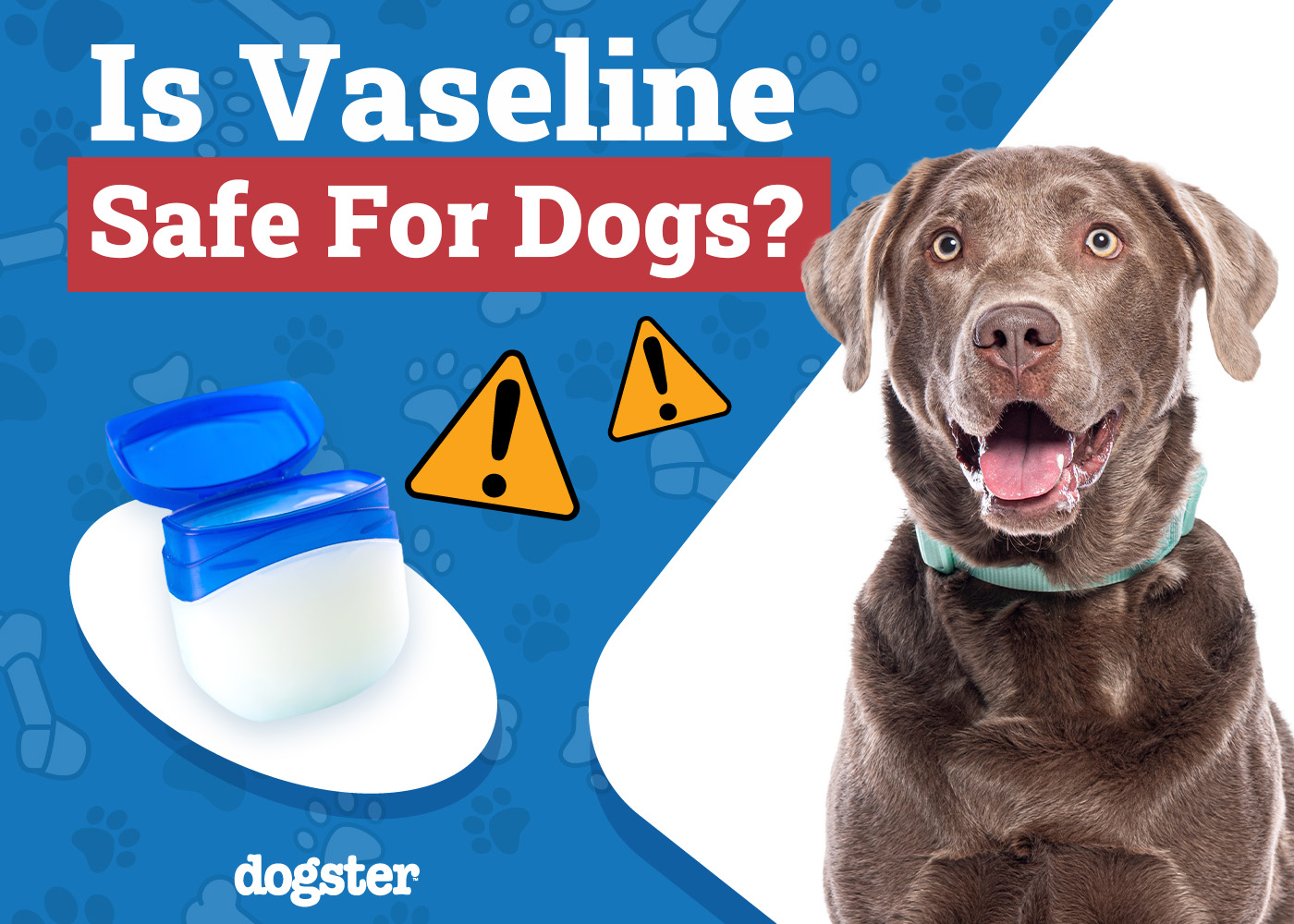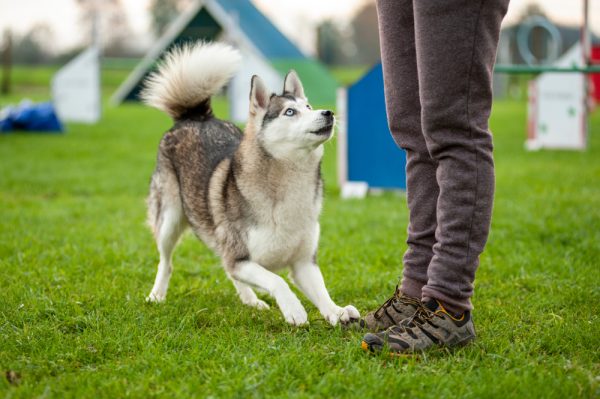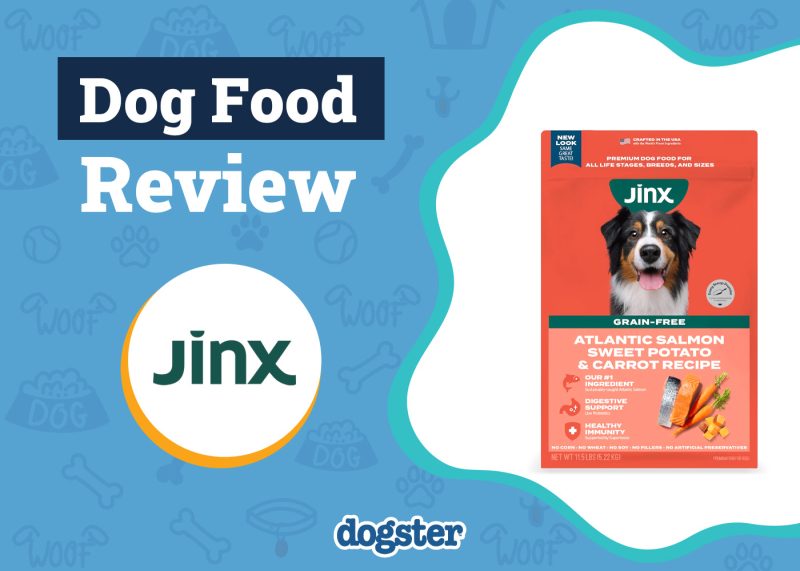In this article
Vaseline is a petroleum jelly-based topical ointment. It is convenient, readily available, and inexpensive to purchase. And, if your dog has dry skin or cracked paws or nose, it is safe to occasionally use Vaseline on your dog.
However, it can cause an upset stomach and other complaints if your dog ingests too much of it. So while it can be useful on occasion if you don’t have anything else to hand, there are safer alternatives formulated specifically for canines that are better options for long-term use.
Below, we’ll examine the possible uses of Vaseline on dogs, how to apply it, and answer some questions related to its use.

What Is Vaseline?
Vaseline is a petroleum jelly. It is made of a combination of oils and waxes, and its jelly-like texture makes it easy to apply while also ensuring that it sits on top of the skin without easily being removed. It was first discovered in 1859 and was based on a gooey jelly that oil workers used to apply to cuts and wounds.
It works by sealing the skin and creating a barrier to prevent water from escaping. This enables the skin to retain moisture and heal. It is often used as a home remedy for cuts, minor burns, and dry skin.
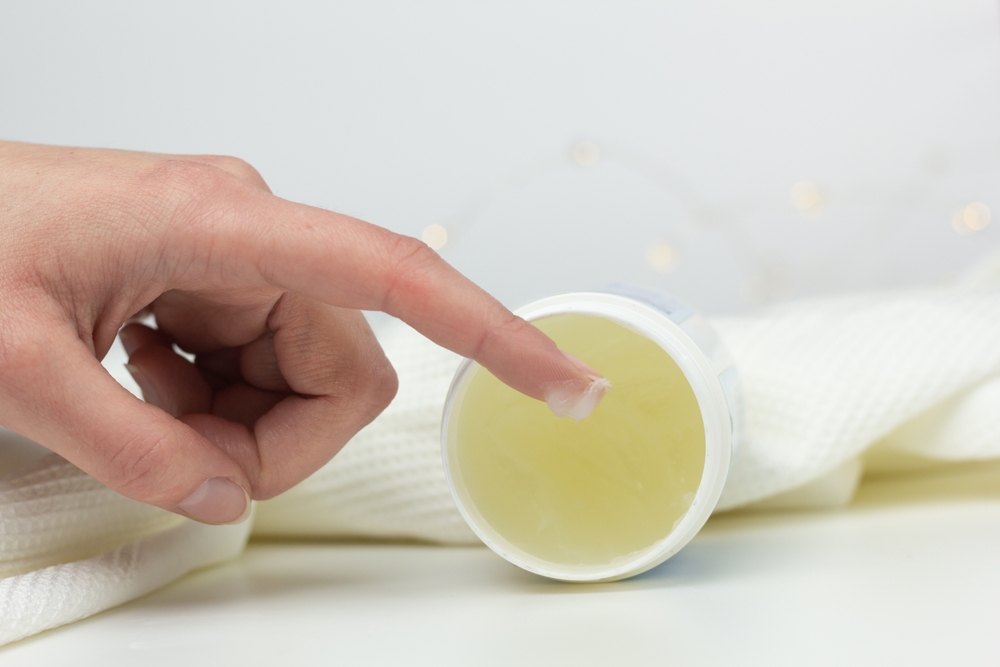
Is Vaseline Safe for Dogs?
Fortunately, Vaseline is not toxic, but if dogs consume too much it can cause gastrointestinal issues, including vomiting and diarrhea. As dogs are prone to licking areas where Vaseline has been applied it can lead to upset stomachs.
While it can act as a barrier to protect skin, it can trap debris and bacteria and contribute to skin infections. Also when used on paws it can make them slippery and difficult for your dog to walk especially on smooth surfaces.
Uses for Vaseline on Dogs
Vaseline can be used on dogs for the same reasons as it is used on people. It can help protect cuts, wounds, and even minor burns. It can also lubricate dry skin, but it can cause a mess if you apply it to an area covered with fur, so is best used on hairless areas.
It can help heal cracked skin by keeping moisture in and allowing the dry area to moisten. It is most often used on a dog’s chapped nose but can also be used on cracked paws or patches of dry skin.

How to Apply Vaseline to Dogs
Applying Vaseline is easy since it’s a jelly that spreads easily. However, you need to take care when applying it and ensure your dog doesn’t lick it.
1. Clean the Area
Vaseline forms a physical barrier over the skin. This helps retain moisture and can prevent dust and other debris from getting into cuts and open wounds. However, it can also prevent air from getting to the skin, and it can trap dirt inside a cut, increasing the chances of infection.
Before applying the jelly, ensure the site has been thoroughly cleaned to prevent this.
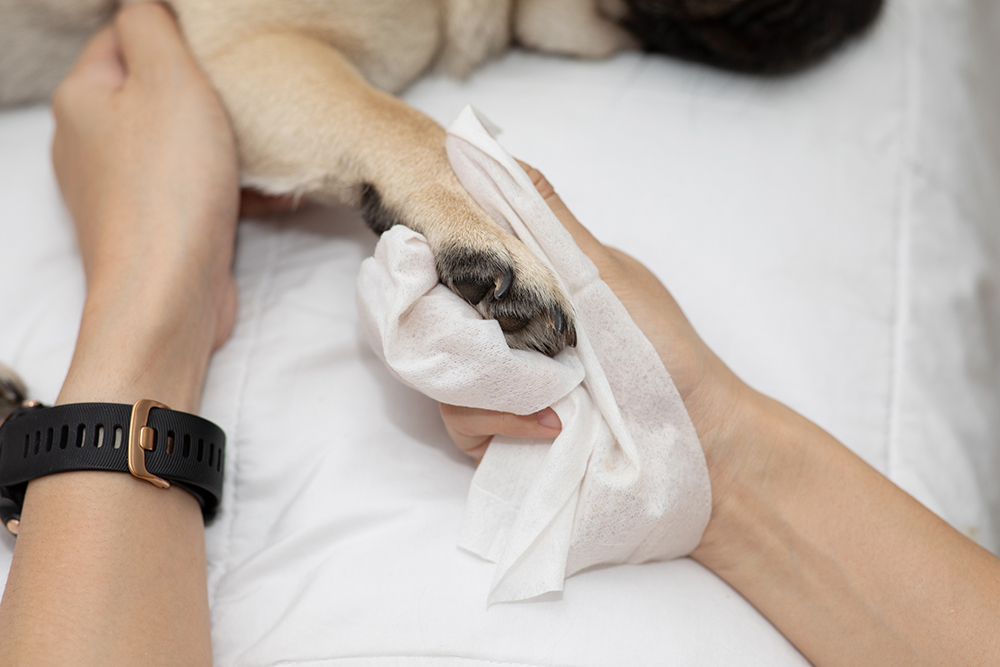
2. Apply a Small Layer of Vaseline
To help soothe a chapped nose or dry paws, you only need a thin layer of Vaseline, and it is easier to add more than to remove some. Start with a pea-sized blob and wipe it over the area.
If you need more, you can add more. Adding too much is not only a waste but also increases the likelihood of your dog slipping on surfaces like wood or laminate when it’s applied to their paws.
3. Protect the Area
You don’t want too much Vaseline gunk on the floor, and if you’re applying it to your dog’s paws, you might want to consider putting doggy booties on for a short while. They will keep the Vaseline in place, not only stopping it from getting on the carpet and the furniture but also reducing the likelihood of your dog slipping on hard surfaces.
4. Consider Applying It Outside
Vaseline can be messy. One way to stop it from getting on furniture and carpets is to apply it outside. Grab a handful of your dog’s favorite treats, head out in the yard, and apply the Vaseline.
Ensure the area is clean before you apply Vaseline, and put on doggy booties before letting your dog back in.
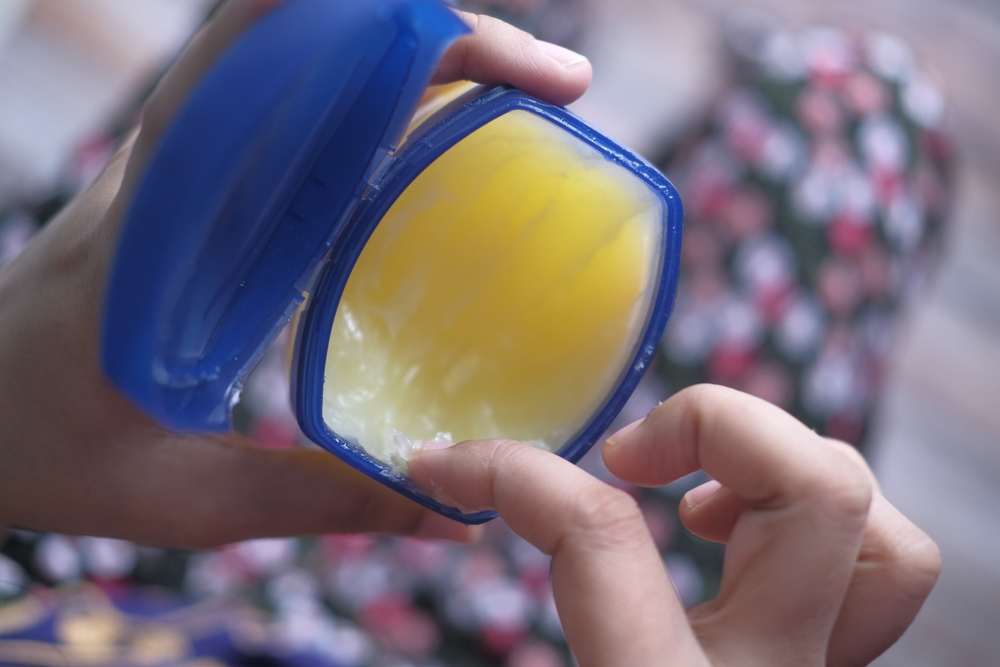
5. Watch Your Dog Doesn’t Consume Too Much
Although it isn’t toxic to dogs, Vaseline is a petroleum jelly, and too much of it can cause stomach issues. To prevent vomiting and diarrhea, you should monitor your dog and ensure they don’t lick or eat too much Vaseline. A small amount shouldn’t pose too much risk, but it is best to discourage any licking of the gooey substance.

What Happens If My Dog Eats Vaseline?
If your pup eats a small amount of Vaseline, it shouldn’t cause too many problems or ill effects. However, it can cause an upset stomach if they eat too much. If you apply it to an area other than their nose or paws, you may need to use an e-collar to prevent them from licking it.
Can I Put Vaseline on My Dog’s Bottom?
You can apply Vaseline around your dog’s bottom, but you need to ensure the area is clean. If you’re worried about dry skin or injuries around the anus, take your dog to the vet.

What Can I Use Instead of Vaseline?
You can buy soothing balms and topical creams that are specifically designed to help moisturize dry skin in dogs. You can also use canine antiseptic creams for cuts and injuries. Speak to your vet for advice on the most appropriate product for your dog’s skin concern.
Can I Put Vaseline on My Dog’s Nose?
One of the common uses of Vaseline on dogs is to help relieve dry and cracked noses. Your dog uses their nose to investigate everything, and it can become chapped, especially in cold weather.
Vaseline forms a protective layer on the dog’s nose, retaining moisture and helping ease the discomfort and can be helpful as a temporary solution. However there are more effective products formulated for dogs available, that are less likely to cause issues if licked off. If you have concerns about your dog’s sore or cracked nose it’s a good idea to consult with your vet to check for any medical conditions.

Conclusion
Vaseline is a petroleum jelly product widely used by people to combat dried skin, chapped lips, cuts, injuries, and burns. It can be used for the same reasons on dogs, too, but it is not always the best option.
If you use it, clean the area first, apply a tiny amount, and try to cover the area so your dog doesn’t lick it all off. Try to make sure your dog doesn’t consume too much of the jelly, and if your dog has a wound, burn or ongoing dry skin condition, consult a vet so they can advise you on what to do next.
Featured Image Credit: TarasBeletskiy, Shutterstock
